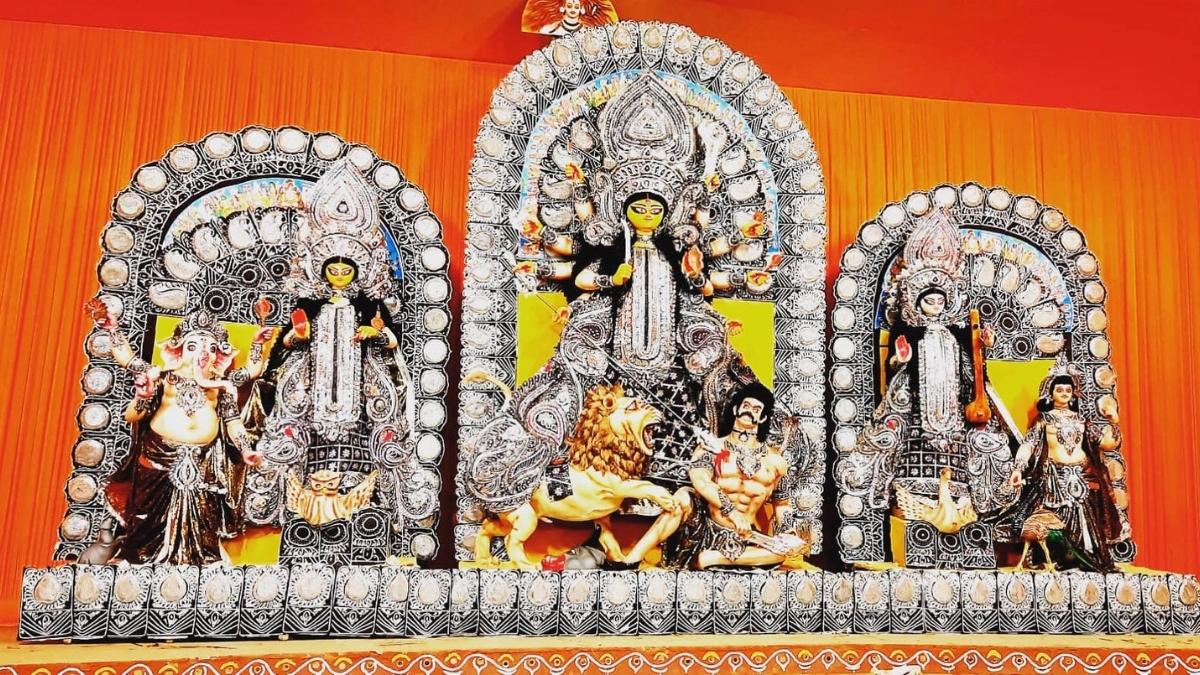Step into the bustling heart of South Delhi, and you’ll find a neighbourhood unlike any other in the sprawling metropolis. Chittaranjan Park, affectionately known as CR Park, stands as a living testament to the vibrant culture and traditions of the Bengali community that found a new home in the wake of India’s tumultuous partition. This mini Bengal has etched its own unique story in the city’s landscape, with its crowning jewel being the grand celebration of Durga Puja. As we journey through time, we explore CR Park—then and now—an enthralling narrative that encapsulates the evolution of a community.
The Evolution Of Durga Puja In CR Park
The roots of CR Park’s Durga Puja can be traced back to 1970, when the very first celebration took place, opposite Market 1. This momentous occasion was the birth of a tradition that would go on to define the neighbourhood. At this point, CR Park was primarily a refuge for Bengalis who had lost their homes and properties in East Bengal during the Partition of India.
A year later, the first Durga Puja in CR Park took place in 1971. Early on, Durga Puja was a celebration of theatre, cinema, and culture rather than just a religious holiday. All-night movie screenings at the pandals combined spirituality with entertainment to create a distinctive experience. As the population of CR Park expanded, the need for more pandals became apparent. The once-intimate gathering began to evolve, transforming into a grander spectacle.
Today, the neighbourhood boasts an impressive 12 to 13 puja pandals, a testament to the ever-growing Bengali community. However, with this increase in scale, the celebration underwent a noticeable transformation. What was once a closely-knit community affair began to lose its community-centric focus. The festival, once an intimate experience, had become more commercialised and sprawling.
Also Read: Chhattisgarh’s Bastar Celebrates A 75-Day Long Dussehra; Here’s All About It, Dates & More
Shifting Traditions And Cultural Revival
Over the years, the evolution of CR Park’s Durga Puja also brought about a positive aspect: an increased awareness of the environment. Many pandals began to restrict the use of plastic and thermocol, and the immersion of idols in the Yamuna River, once a common practice, was curtailed. This shift towards environmental consciousness showcased the adaptability and progressiveness of the community.
Also Read: Durga Puja: Why Is Durga Maa Served Khichuri Or Khichdi, A Simple Rice Dish?
In the early years of CR Park Durga Puja, every rooftop echoed with the sounds of residents rehearsing plays for the pandals. Local artists thrived, creating a close-knit cultural community. However, over time, these local talents gave way to celebrity performances. The neighbourhood’s theatre culture began to evolve, with big names taking centre stage. Similarly, the way people consumed food during the puja shifted. In the beginning, the culinary experiences at Durga Puja were simpler, reflecting a time when the festival was more about community than commerce.
CR Park’s journey from an intimate, family-oriented celebration to a grand and commercialised event is a reflection of the changing times. While some may miss the days of close-knit community celebrations, the neighbourhood continues to evolve, adapt, and embrace new values.
In the heart of Delhi, CR Park stands as a living testament to the enduring spirit of the Bengali community.
Cover Image Courtesy: Durga Pooja Samiti, CR Park, Mela Ground/Facebook
For more such snackable content, interesting discoveries and latest updates on food, travel and experiences in your city, download the Curly Tales App. Download HERE.
Good news! We are on WhatsApp! Subscribe to Curly Tales WhatsApp Channel to stay up-to-date with exclusive content and BTS. Join HERE.

